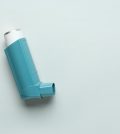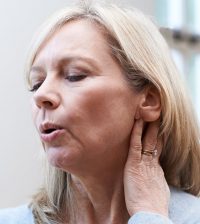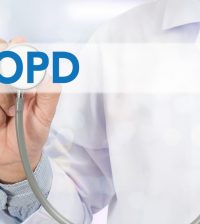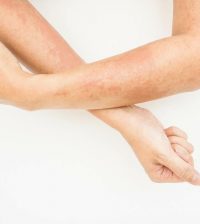- Taking a GLP-1 Medication? Here’s Tips to Holiday Eating
- Bird Flu Virus in Canadian Teen Shows Mutations That Could Help It Spread Among Humans
- Flu, COVID Vaccination Rates Remain Low as Winter Nears
- ’10 Americas:’ Health Disparities Mean Life Expectancy Varies Across U.S.
- Short-Term Hormone Therapy for Menopause Won’t Harm Women’s Brains
- Could a Vitamin Be Effective Treatment for COPD?
- Woman Receives World’s First Robotic Double-Lung Transplant
- Flavored Vapes Behind Big Surge in U.S. E-Cigarette Sales
- Reading Beyond Headline Rare For Most on Social Media, Study Finds
- Meds Like Ozempic Are Causing Folks to Waste More Food
AHA News: She Couldn’t Put Up Her Arms on a Roller Coaster. A Stroke Followed.
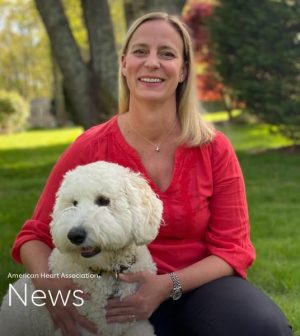
WEDNESDAY, Aug. 4, 2021 (American Heart Association News) — Like many roller coaster lovers, Brooke O’Connell and her son Declan always threw their hands up in the air during descents.
“Mom, put your hands up!” he shouted while the two shared a ride on a corkscrew coaster at an amusement park in Orlando.
But Brooke couldn’t raise her arms. She figured the centrifugal force kept them down.
After getting off the ride, Brooke’s neck felt a little sore.
A week later, back home in Rhode Island, Brooke left a 12-hour shift as a pharmacist and was on her way to dinner with her family. Walking into a restaurant, she called her husband, Michael, to see where they were sitting. She dropped her phone, picked it up and dropped it again. Her older son, Quinn, waved his hands to get her attention, but she didn’t see him.
When she finally found their table, Michael immediately saw something was wrong. Brooke seemed disoriented and her speech was slurred.
Her sister-in-law, also at the table, insisted they call 911. Within a minute, Brooke was walking and speaking normally again. Still, they decided to go to the emergency room.
A CT scan showed Brooke had experienced a transient ischemic attack, also known as a mini-stroke. It is often a warning sign of a looming massive stroke.
Her TIA was caused by a dissected carotid artery, which is essentially a tearing inside one of the main pathways in the neck delivering blood from the heart to the brain. Doctors thought the fit 43-year-old likely suffered the damage during the roller coaster ride.
A stroke “wasn’t even on my radar, because I was young and active, with no health issues,” Brooke said.
She stayed in the hospital overnight. Doctors concluded the tear wasn’t big enough to repair and that it would heal itself. They told her to take it easy for a while, avoid strenuous exercise and take low-dose aspirin for a year.
While she was parked on the couch watching television on her first day home, a friend came by to visit. She got up quickly to let her in.
They talked for a few minutes, then Brooke’s speech slurred and she slumped against the couch. It was happening again.
Michael called 911. She was soon back at the hospital.
Doctors determined Brooke had a severe stroke caused by a clot from the tear, perhaps dislodged by her jumping up to answer the door.
Despite those flukes, she also had some good fortune.
It started with the quick response from her husband and the EMTs. Then there was the fact that the hospital had a specialist trained in what was then in 2019 the relatively new procedure of mechanical thrombectomy. In some people, doctors can use a catheter and device to grab the clot and remove it from the brain. Doctors also placed four stents in her carotid artery to keep it open.
Brooke’s only physical after-effect is in the finger joints of her left hand, which don’t bend as fluidly as they used to, slowing her typing speed.
The doctor told her later that if her stroke had happened before the new procedure was widely available, her husband either would be planning her funeral or building her a ramp.
Mentally, Brooke struggled.
Although doctors told her what happened to her was a fluke and it had been repaired, she remained fearful.
“In the beginning, I was scared to be by myself in case anything happened,” she said. “I never really had anxiety before, but now I definitely feel a little anxious about things that are out of my control.”
She went to a behavioral therapist to learn coping mechanisms, which helped. She also found solace in her new sidekick, Okie, the family’s Goldendoodle.
“We were not dog people at all,” Michael said. “But now it feels like he’s another member of the family. He is right there by Brooke’s side every moment that she’s home, which has really helped her. … I’m just really proud of her for how she’s handled everything she’s gone through.”
Both Brooke and Michael have been active in spreading the word about stroke, especially among younger people, and about funding research for cutting-edge treatments, such as the one she received.
Later in 2019, Brooke spoke to more than 400 people at the American Heart Association’s Southern New England Heart and Stroke Ball.
“I’m not a huge fan of being the center of attention,” she said, “but I would stand on the rooftop and shout to get the word out.”
American Heart Association News covers heart and brain health. Not all views expressed in this story reflect the official position of the American Heart Association. Copyright is owned or held by the American Heart Association, Inc., and all rights are reserved. If you have questions or comments about this story, please email editor@heart.org.
By Diane Daniel
Copyright © 2024 HealthDay. All rights reserved.



-120x134.jpg)
